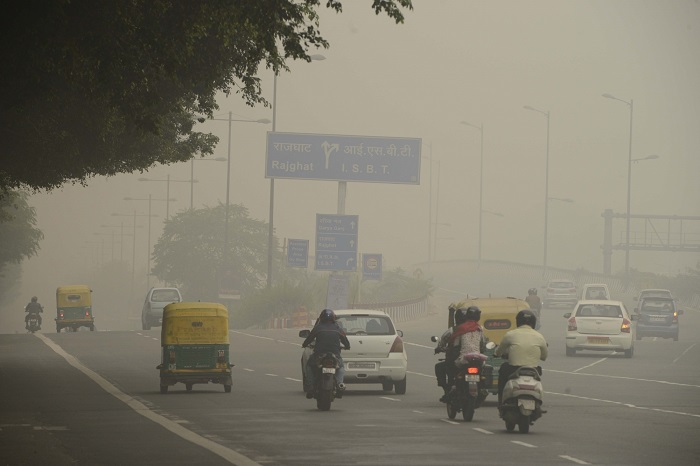New Delhi, As predicted, the overall air quality of Delhi and adjoining areas deteriorated to “very poor” on Monday, after days of improved “moderate” air caused by last Thursday’s rain and hailstorm, which washed away the pollutants across the city.
“This return of very poor air quality in the national capital can be attributed to reduced wind speed since Sunday night. It has caused the pollutants to be concentrated in one place. The decrease in wind speed also led to shallow fog in the morning,” Mahesh Palawat, Director of private weather agency Skymet told IANS.
He added that the air quality in Delhi will oscillate between poor and very poor for the rest of February and only rain would be able to improve the situation to moderate or satisfactory.
The overall air quality index (AQI) of Delhi at 4 p.m. on Monday was recorded at 309 (“ery poor”), against Saturday’s “moderate”. It began to deteriorate from Sunday evening as wind speed dropped and settled Sunday’s AQI at 276 – considered “poor” on a scale of 0 to 500.
“Strong surface inversion – a phenomenon responsible for producing smog, trapping the pollutants produced by vehicles, fires and industrial activities – is another factor for the rise in pollution,” System of Air Quality and Weather Forecasting and Research (SAFAR) said.
The agency added that in these circumstances, the air quality in Delhi-NCR over the next two days would further deteriorate, but may improve with the likelihood of a fresh western disturbance on Thursday.
This year, the Skymet Director said, Delhi is experiencing an extended winter due to frequent western disturbances. “The air quality will improve and remain constant once the temperatures begin rising in March,” Palawat said.
According to the India Meteorological Department (IMD), this year has already witnessed nine western disturbances – seven in January and two in February. A third western disturbance in February is forecasted on Thursday and is expected to bring rain, accompanied by strong winds, thunderstorm and hailstorm to the city. “A fourth western disturbance might happen around February 19,” Palawat informed.
This western disturbance is again expected to wash away the pollutants in Delhi. It may also increase the minimum temperature in northwest India by 3 to 4 degrees Celsius between Wednesday and Friday.
According to the IMD bulletin, the minimum temperature is expected to reach 13 degrees Celsius – 4 notches above the season’s normal – during the period, while the maximum temperature is expected to hover around 21 degrees Celsius.










